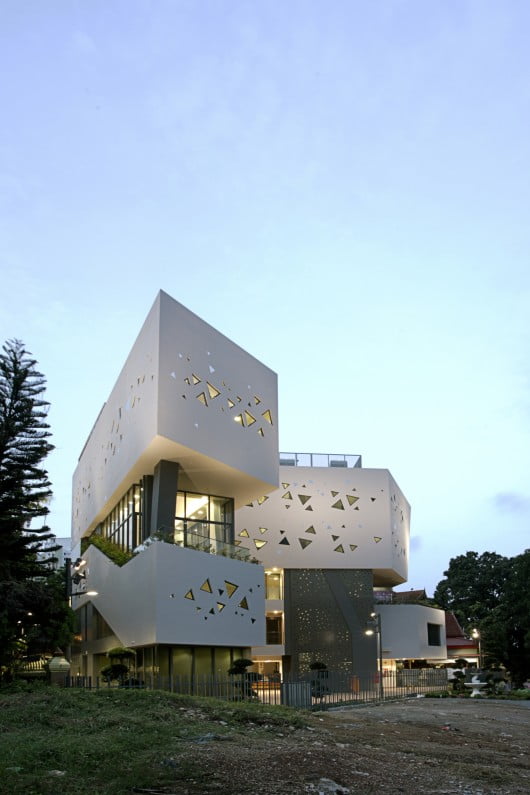Contemporary Temple Architecture of Thai Buddhist Temple – Wat Ananda Metyarama is in Singapore. That receives royal patronage from the Thai Royal Family. Contemporary Temple Architecture of Thai Buddhist Temple with its long monastic tradition of ordaining monks. The temple will celebrate its 90th anniversary since its inauguration by expanding. It’s current facilities by adding a new block next to its existing historic Main Shrine. The new commemorative structure will have to replace the current 3 storey Monks Quarters. And will need double its current 600 sq.m. built in floor area. The program for the extension block not only calls for more monks quarters. It would include additional prayer halls, meditation centers. Dharma classrooms, a Museum and an large space for communal festivities during key dates in the Buddhist calendar.
Contemporary Temple Architecture of Thai Buddhist Temple.
Fact file of Contemporary Temple Architecture:
Architects: Czarl Architects
Location: Block 116 HDB Jln Bukit Merah, 116 Jalan Bukit Merah, Singapore 160116
Design Team: Carl Lim, Anditya Dwi Saputra, MingFu Weng, Nic Chan
Area: 1526.0 sqm
Year: 2014
Photographs: MingFu Weng
Collaborator: Logam Designs Pte Ltd – Interiors and Z+N Group Pte Ltd
C&S Engineer: PTS Consultants
M&E Engineer: AE&T Consultants Pte
Contractor: Ang Cheng Guan Construction Pte Ltd
Landscape Designer: Nature Landscapes Pte Ltd
Lighting Consultant: Sharon Lee
Cost Consultant: YSCA Consultancy Singapore Pte Ltd
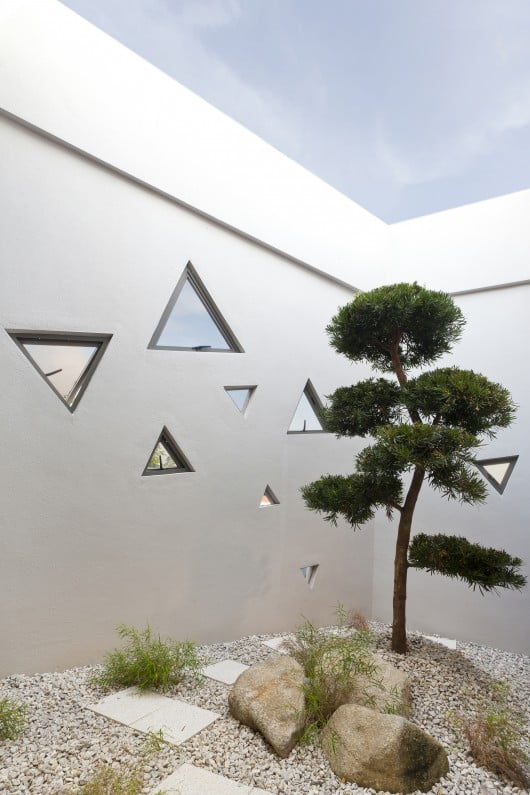
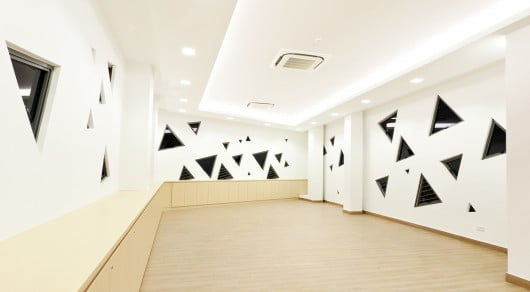
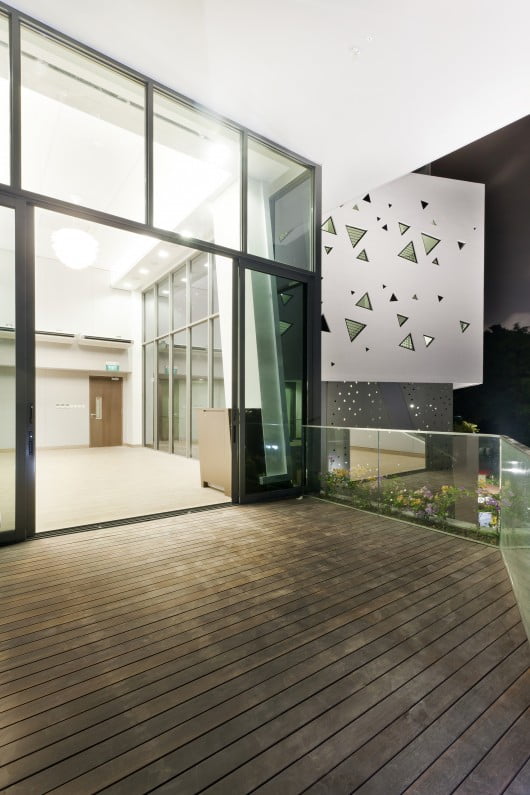
Site Context:
Located on the small plot of land on top of a hill site, the temple, with its golden roof and soaring stupas is a distinctive icon, visible from its northern and eastern low lying neighborhood. The temple back against a high way on its west side while its south side faces a strip lush vegetation on a vacant plot of State land.
Design Approach:
At the onset of the project, the Client has specifically requested that the temple extension should aspire to not to follow the architectural traditions of Thai temples. But rather be a “reflection“ of it. The design for the extension block is developed from the narrative of the Buddha attaining his Enlightenment. While meditating under a Boddhi tree. Conceptually, the Boddhi Tree can be considered as the original House of the Buddha. And the idea of a tree as a one that shelters, protects and nurtures springs forth as a key notion of our proposed threefold architectural strategy. The new structure would also necessarily form a frame that defines boundaries of a space/form of a void as suggested by common visuals of the Buddha meditating below the Boddhi Tree where the tree is essentially a frame. The void space would also inform the absence of the existing Stupa. Which would be removed eventually.
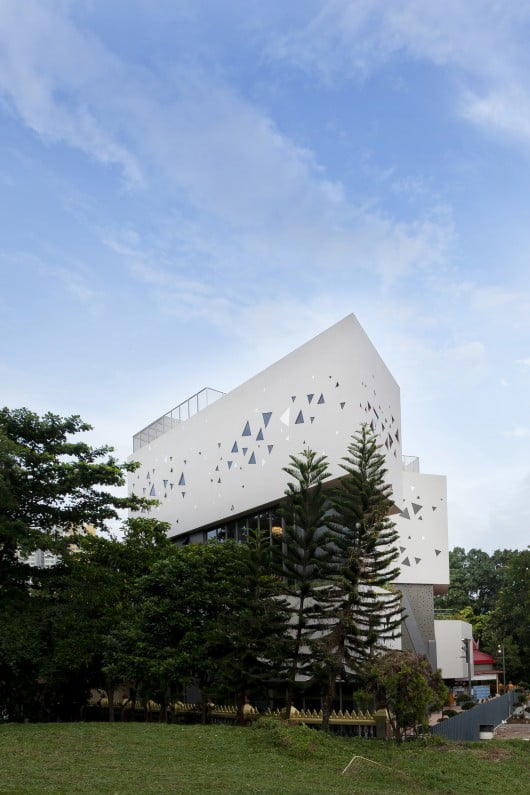
Design Approach 1: V -shaped Planning
Taking on a “V” shaped plan that back against the highway, the design of the new building would frame a large front courtyard space that could hold major religious communal festivities. The branching off of either wing of the V shaped plan would accommodate the various program as required on various levels. Systematically, the programmatic requirements would be arranged and distributed in various levels accordance to the notion that traces the growth of a Buddhist based on the following;1. Discovery 2. Learning 3. Meditation4. Sermon/ Discourse
Design Approach 2: Fragmentation and Displacement of Volumes
To emphasize the hierarchy associated with the above , either wing of the new block would comprise staggered arrangement of displaced and sometimes cantilevered boxes that is supported by skewed buttress like columns. Accentuating this volumetric displacement is a play of solidness and transparency applied on the envelope of the volumes. For example, the meditation hall at the 4 th floor is loft space enclosed by openable glass panels that allows maximize natural light and view out to the green terraces beyond. Sky gardens , long planters are also integrated into envelope design of the building to allow “break up “ the building and allow for much greenery. This gives the illusion of an urban “tree” building, one that would offer a visual relief to the residents nearby.
Design Approach 3: Fenestration
Abstraction of light filtering through the gaps between the leaves of the Boddhi tree are necessarily mapped onto the facade to create an organic random pattern of triangular windows. While seemingly random, the position and size of windows are actually tabulated in relation to the degree for natural lighting as required to by the interior space. The constant changing and dramatic of play of light and shadow through these windows can be best experienced in the Prayer Halls , reminding oneself that change and impermanence of life is the only constant.
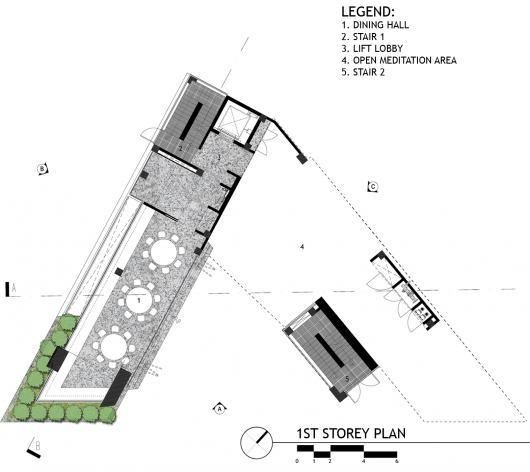
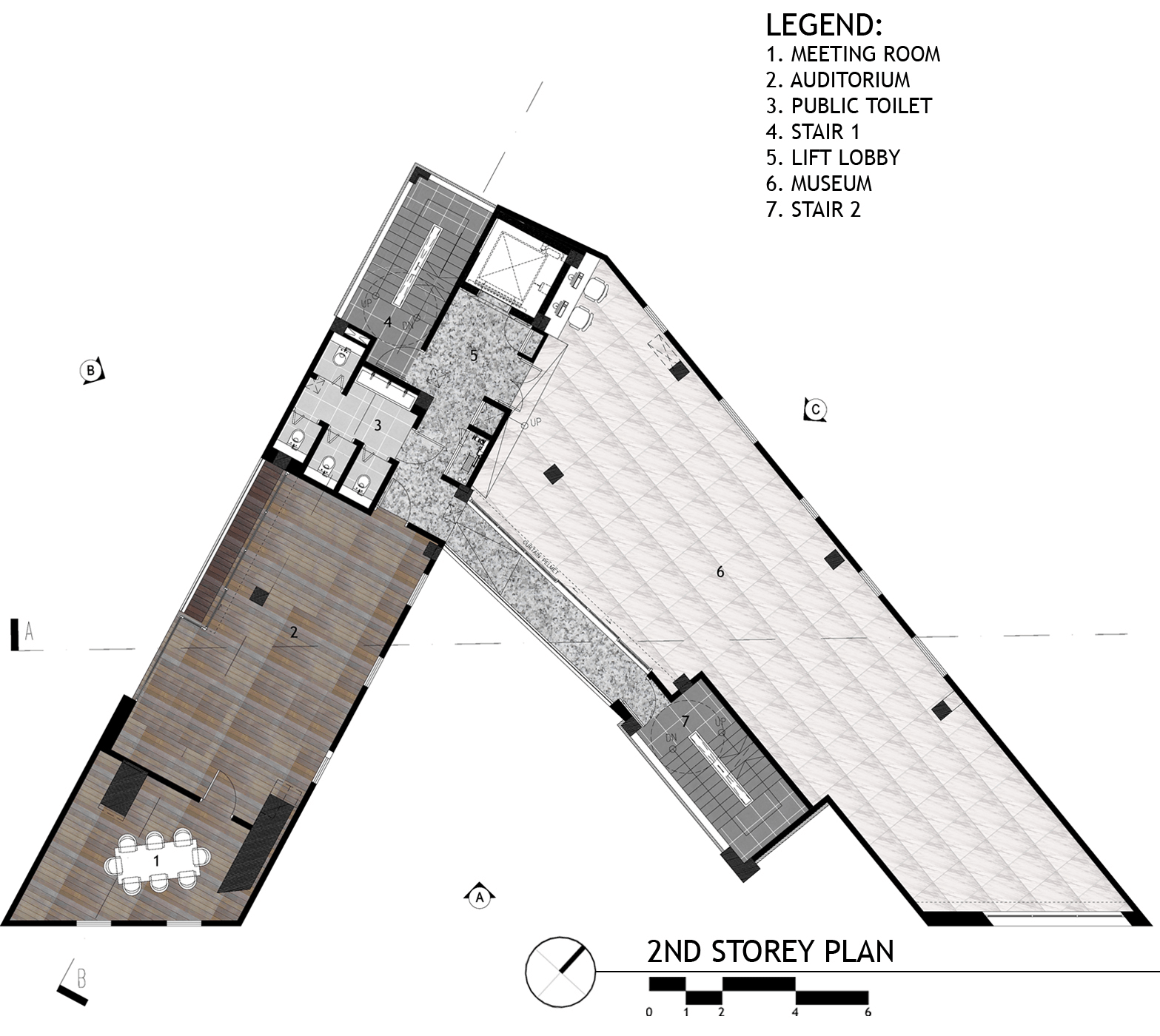
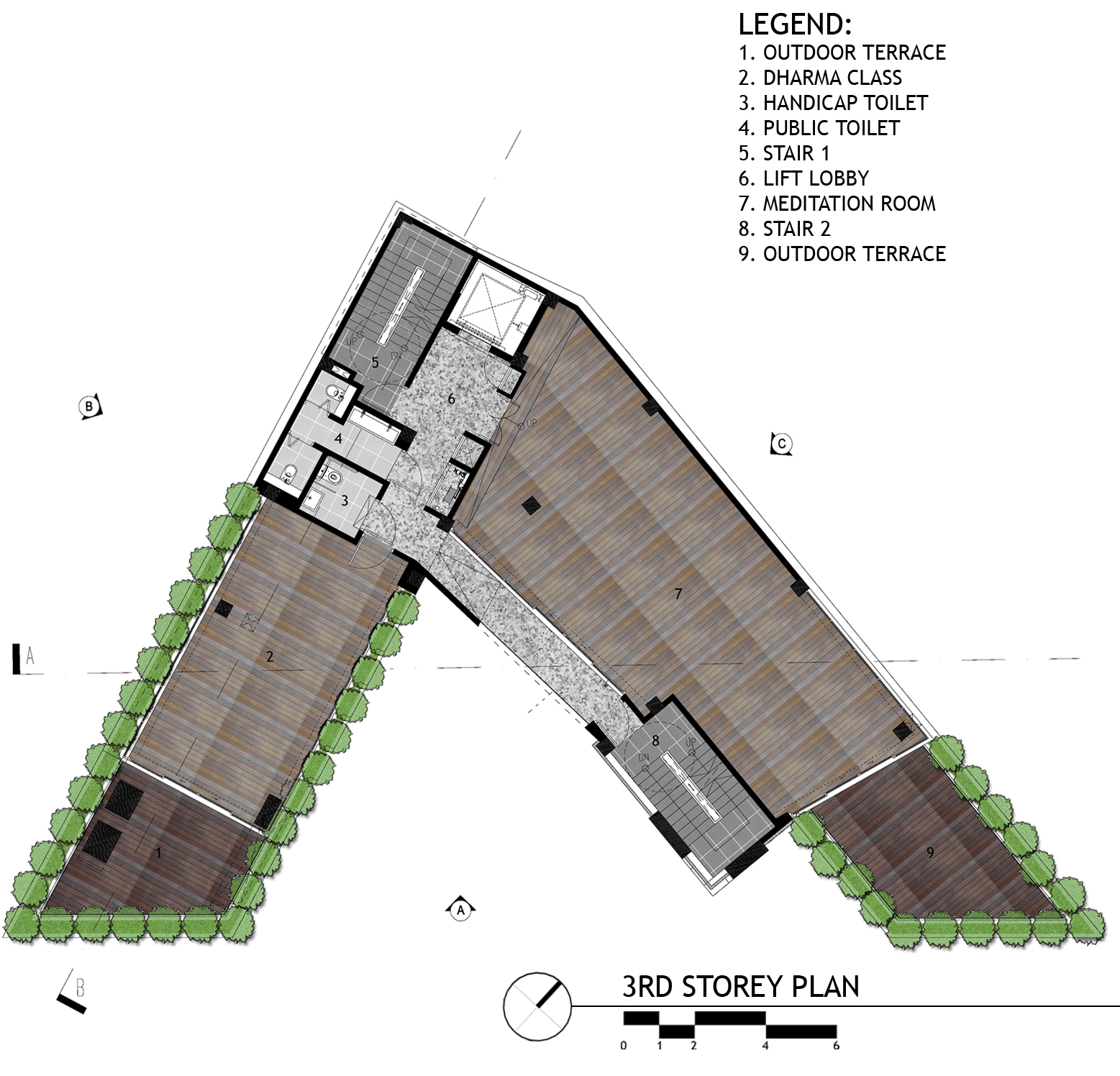
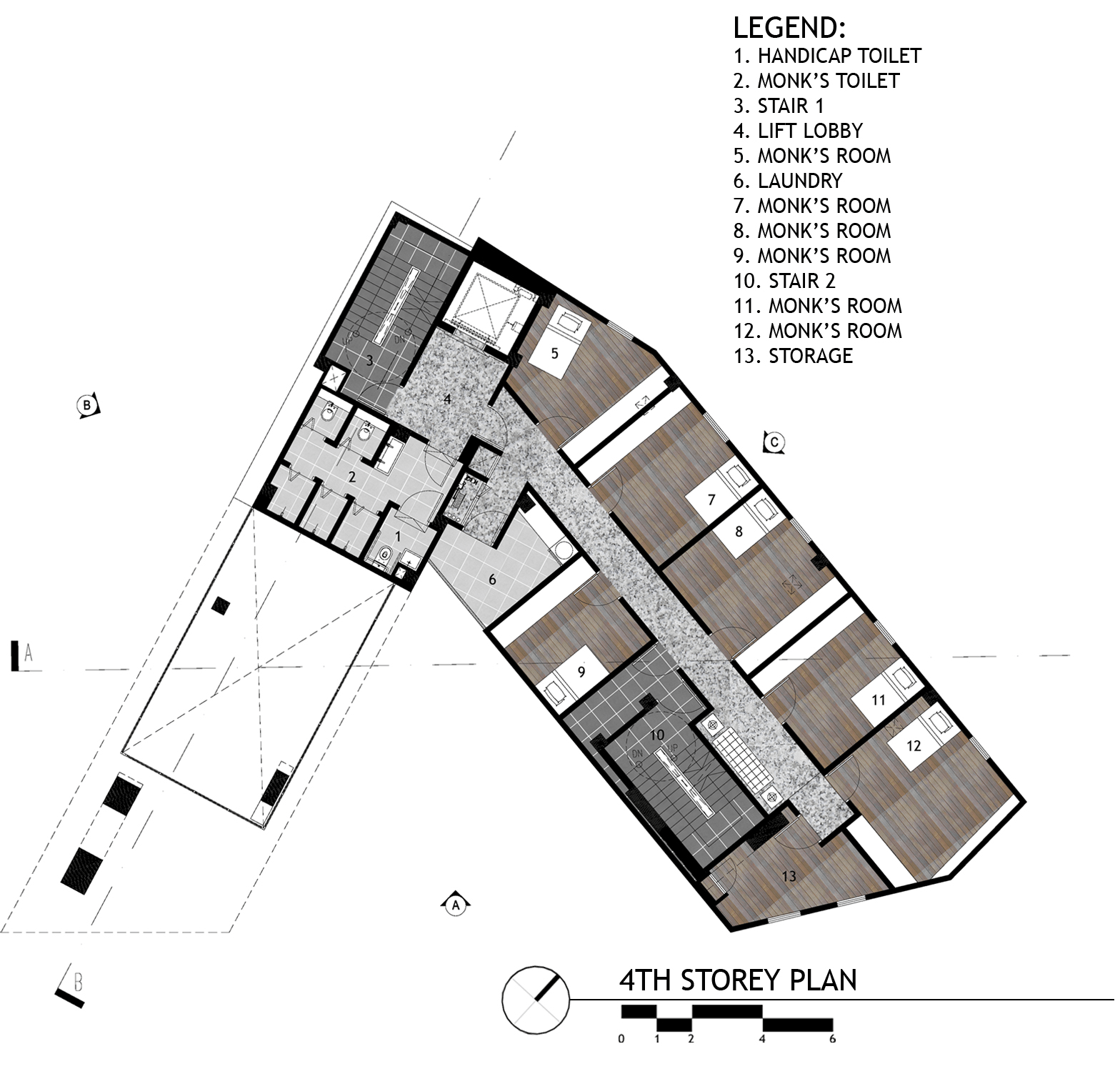
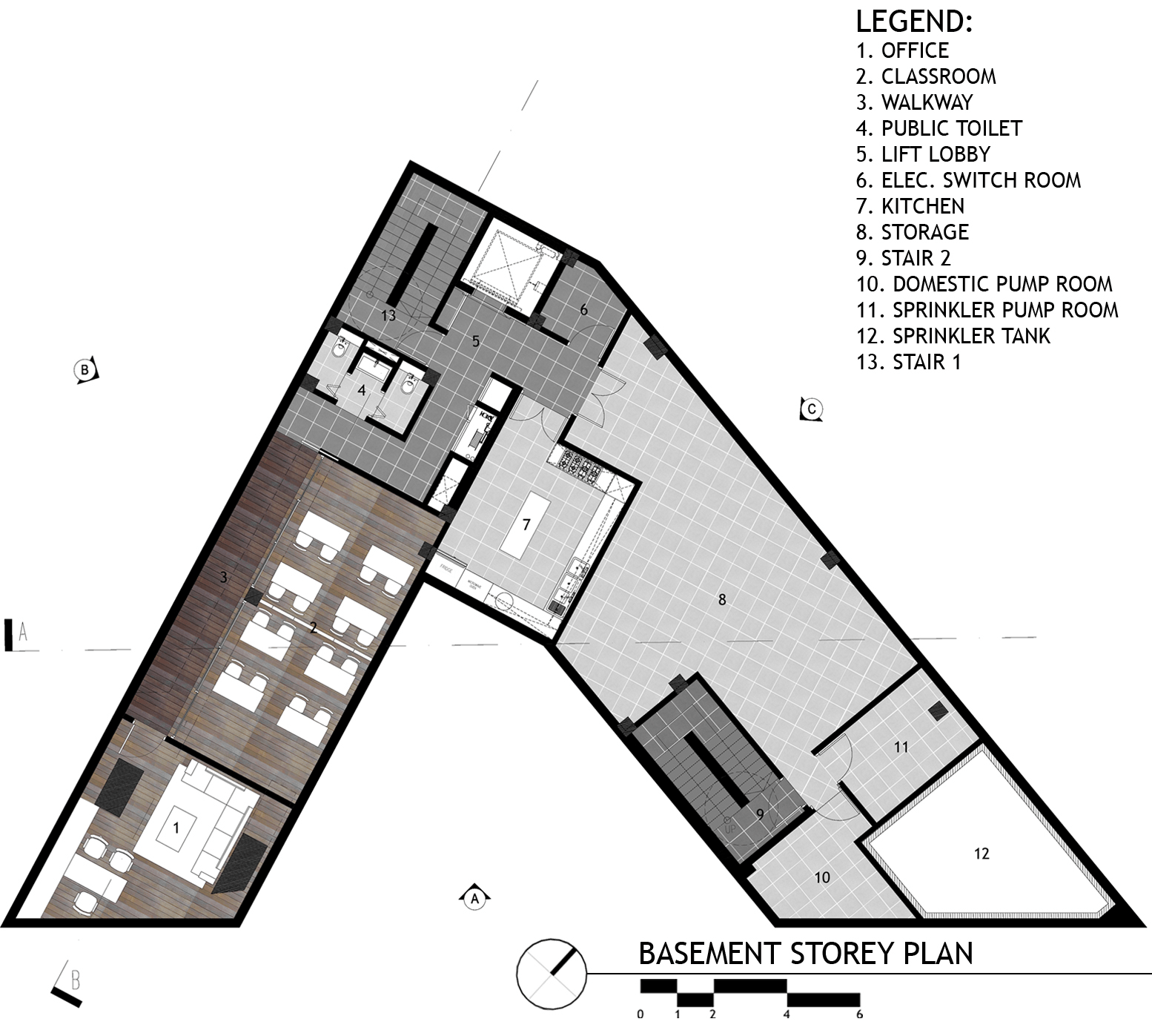
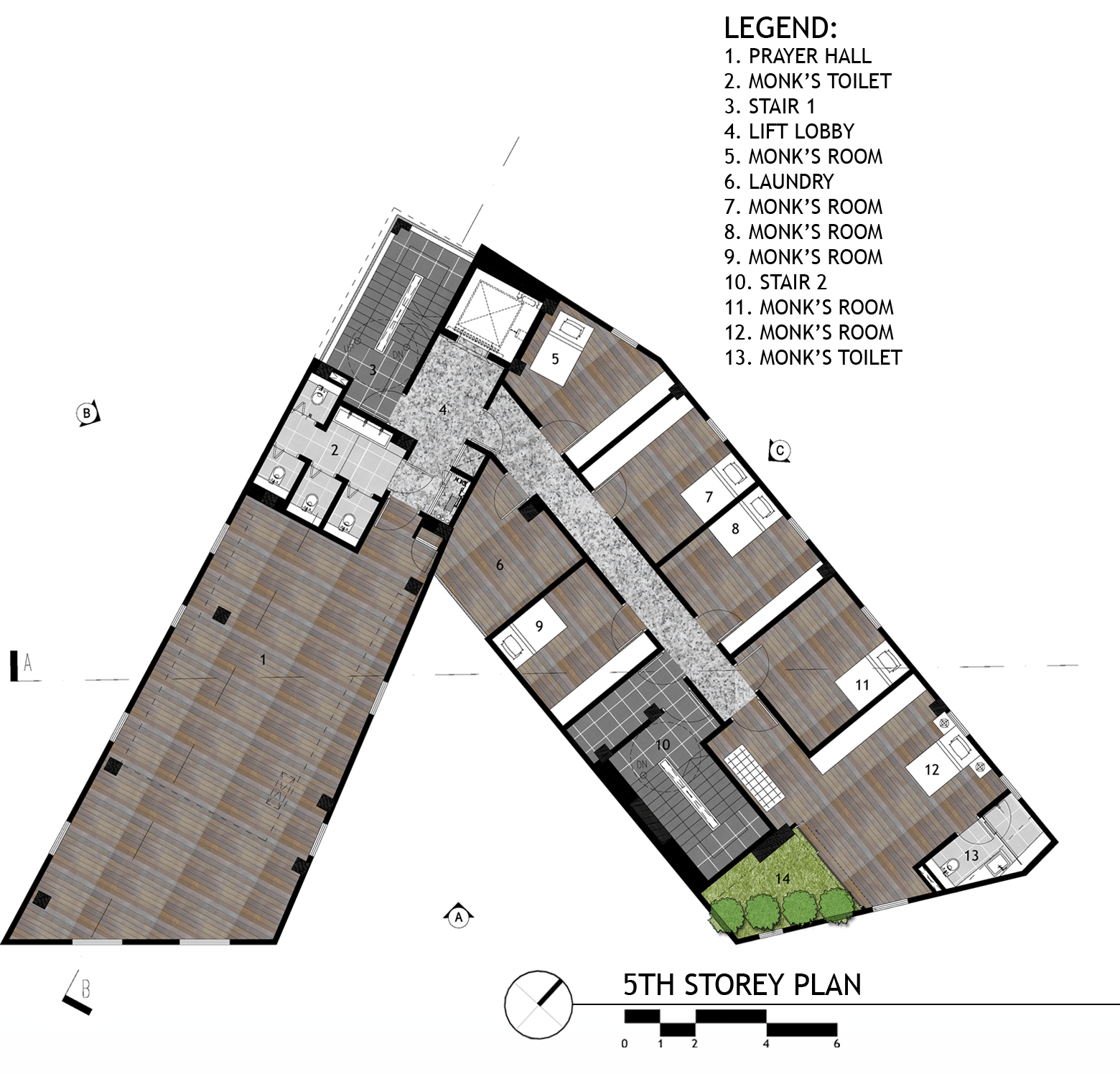
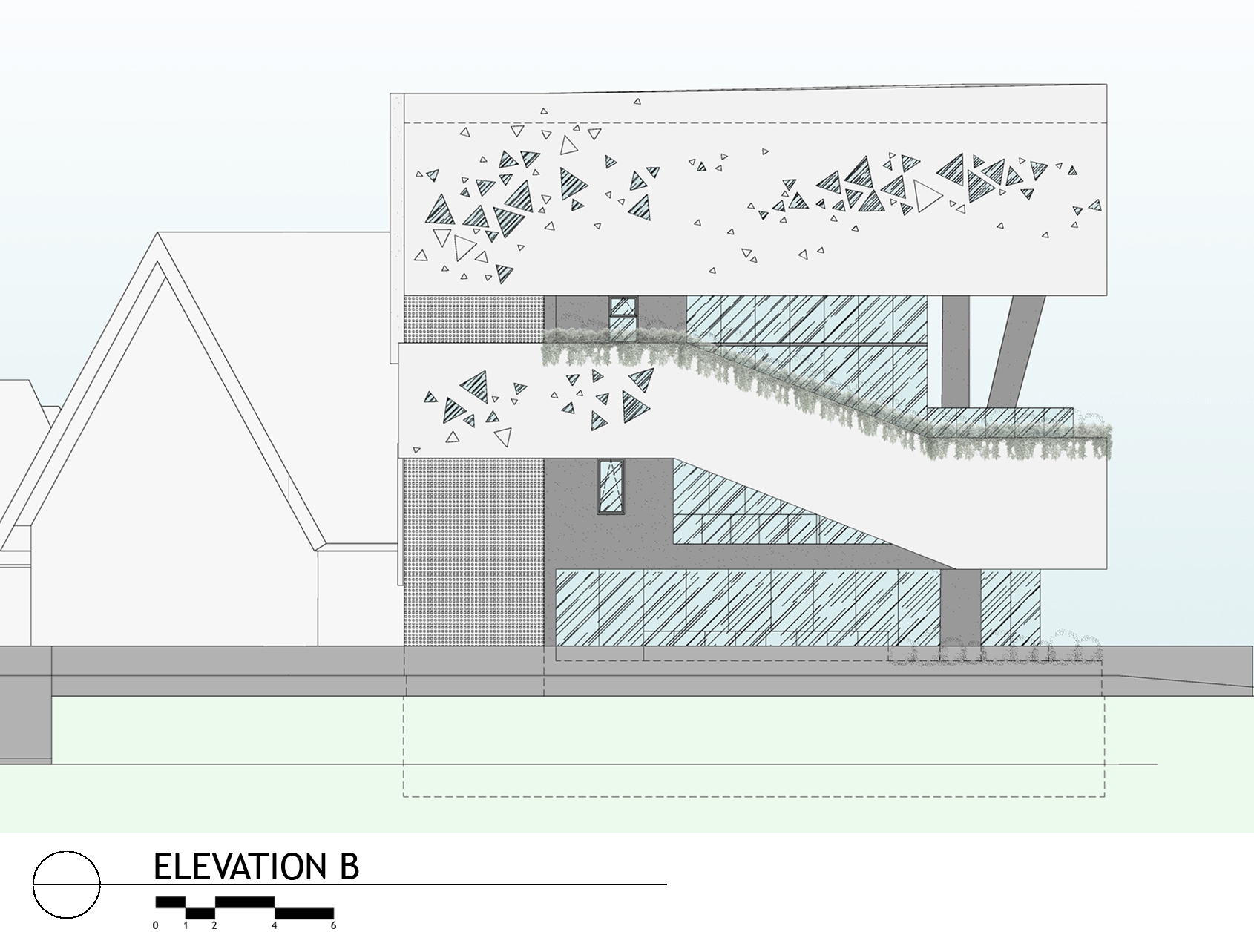
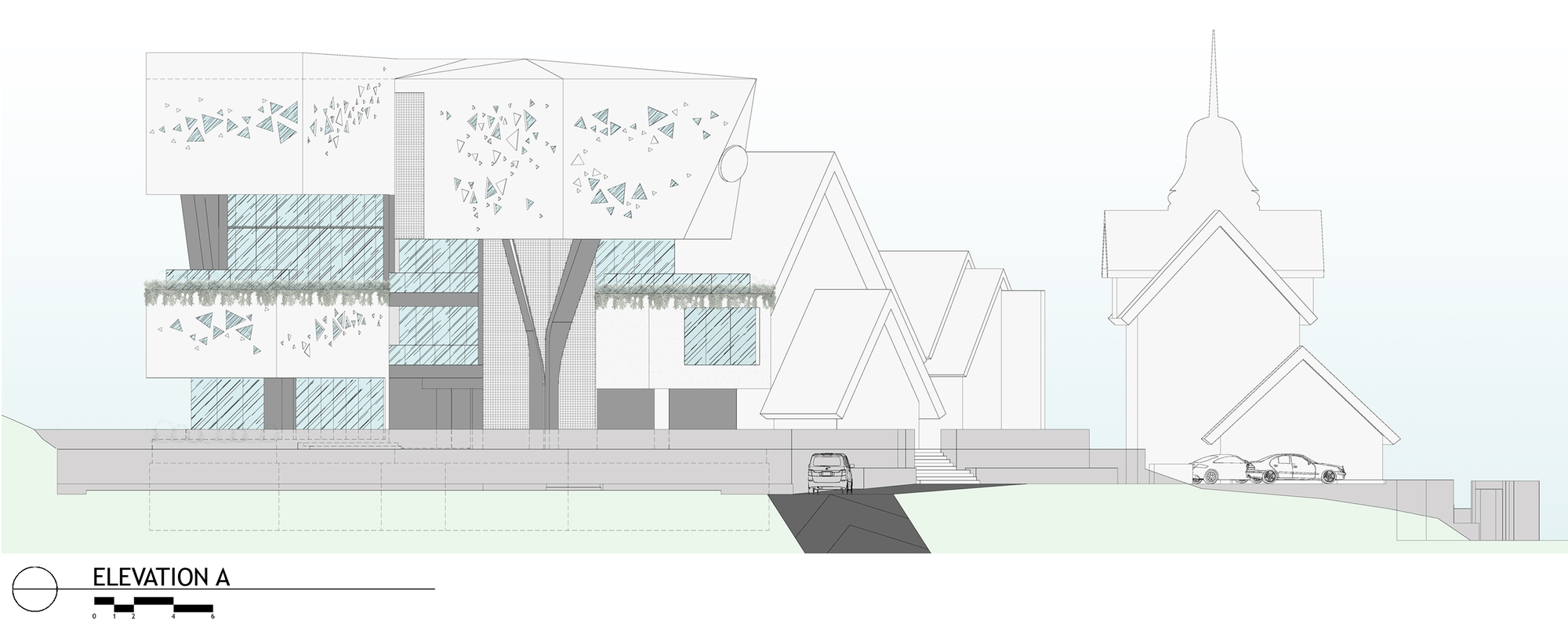
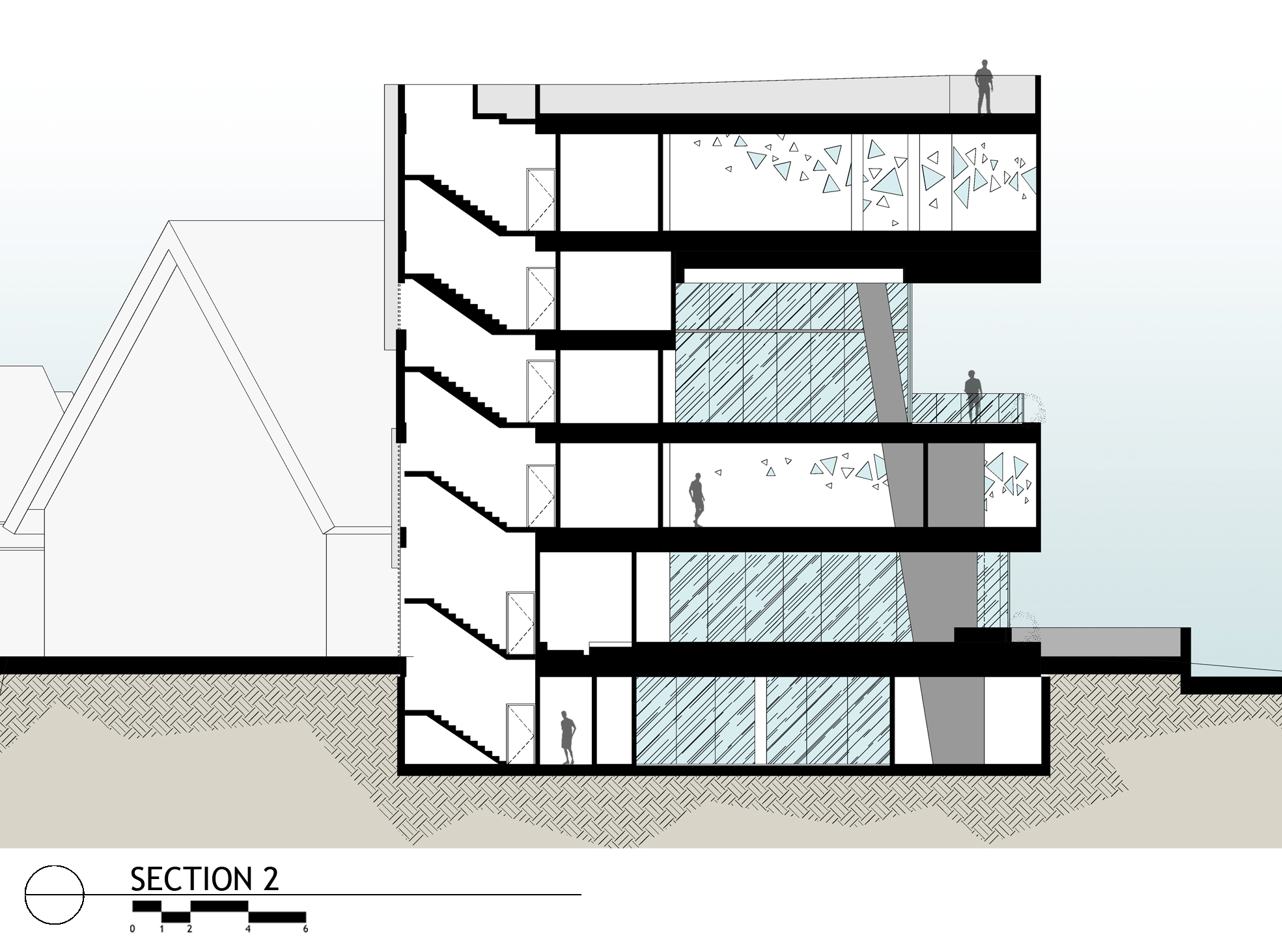
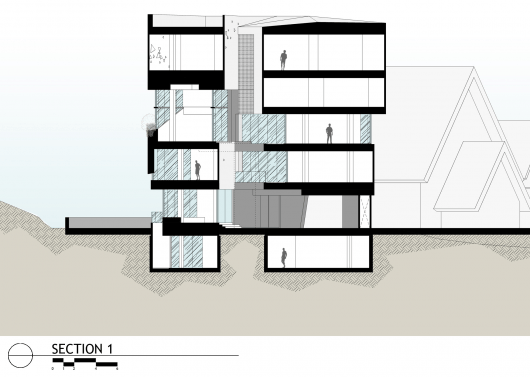
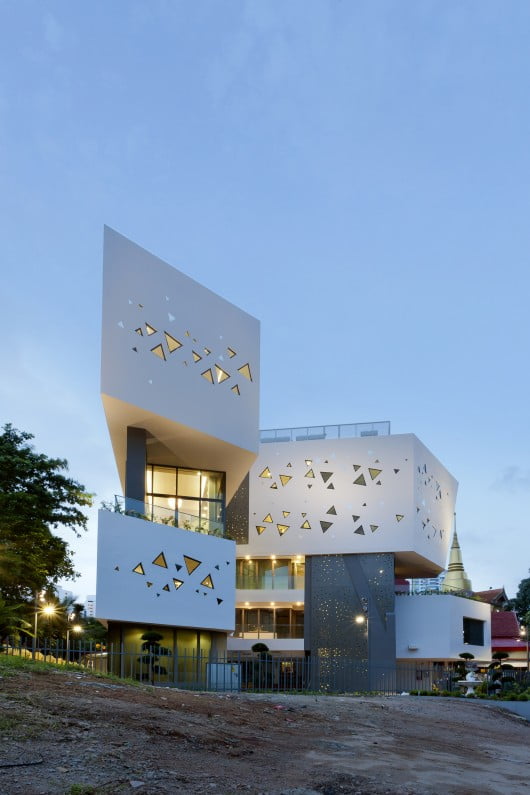
So, friends this is all about Contemporary Temple Architecture of Thai Buddhist Temple – Wat Ananda Metyarama, hope you people like to go through it and get some ideas about how present or you can say contemporary temple architecture is what direction of development.
